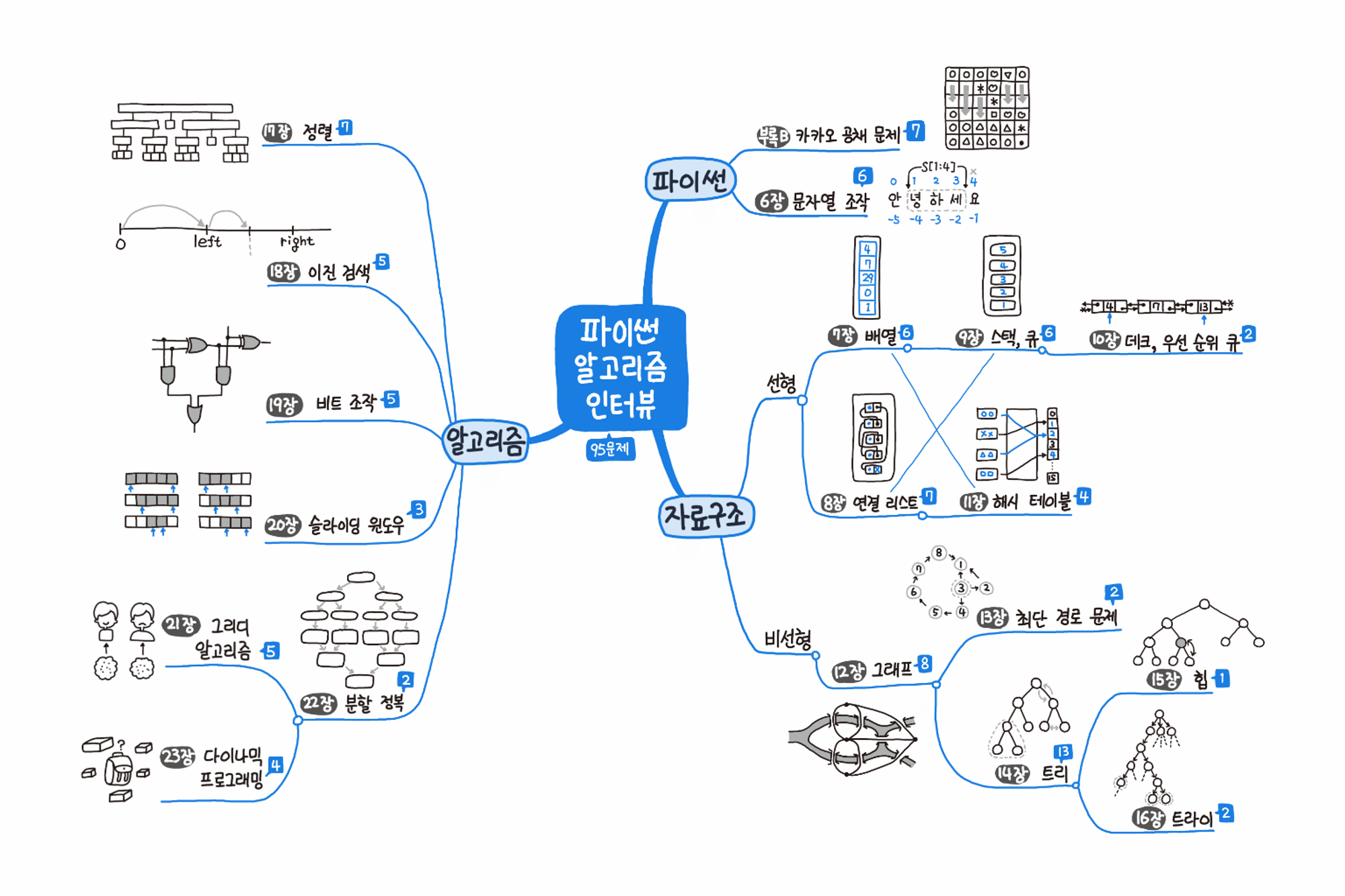✅ 파이썬 문법
1. 인덴트
- 공백 4칸 들여쓰기: 파이썬 개선 제안서 8(PEP 8, Python Enhancement Proposals) 기준
2. 네이밍 컨벤션
- 변수, 함수명: 스네이크 케이스
예시
모듈 상수는 모두 대문자를 사용하고 단어마다 밑줄로 연결하는 ALL_CAPS 포맷으로 명명
MAX_COUNT = 100
클래스의 public attribute는 밑줄로 시작하지 말아야 함
class Student: schoolName = 'XYZ School' # class attribute def __init__(self, name, age): self.name=name # instance attribute self.age=age # instance attribute
클래스의 protected instance attribute는 하나의 밑줄로 시작
class Modifiers: def __init__(self,name): self._protected_member = name # Protected Attribute
클래스의 private instance attribute는 2개의 밑줄로 시작
class Modifiers: def __init__(self, name): self.__private_member = name # Private Attribute
인스턴스 메서드는 (객체 자신을 가리키기 위해) self 를 사용
class DecoratorExample: """ Example Class """ def __init__(self): """ Example Setup """ print('Hello, World!') self.name = 'Decorator_Example' def example_function(self): """ This method is an instance method! """ print('I\'m an instance method!') print('My name is ' + self.name)
클래스 메서드는 (클래스 자신을 가리키기 위해) cls 를 사용
class DecoratorExample: """ Example Class """ def __init__(self): """ Example Setup """ print('Hello, World!') @classmethod def example_function(cls): """ This method is a class method! """ print('I\'m a class method!') cls.some_other_function() @staticmethod def some_other_function(): print('Hello!')
- 클래스: 카멜 케이스
- 상수: 대문자 + 밑줄
3. 타입 힌트
- 명시적 선언을 통해 가독성 up, 버그 발생 확률 down
a: str = "1" b: int = 1
def fn(a: int) -> bool: ...
- 강제 규약이 아니기에 동적 할당될 수 있으므로 주의 필요
>>> a: str = 1 >>> type(a) <class 'int'>
4. 리스트 컴프리헨션
- 한 줄로 간결하게 작성 가능하여, 가독성이 좋은 편
- 대체로 표현식은 두개를 넘지 않아야
>>> [n * 2 for n in range(1, 10+1) if n % 2 == 1] [2, 6, 10, 14, 18]
그냥 작성시 → 길고, 별도의 리스트 변수까지 필요
>>> a = [] >>> for n in range (1, 10+1): >>> if n % 2 == 1: >>> a.append(n * 2)
리스트 외의 딕셔너리 등이 가능
a = {} for key, value in original.items(): a[key] = value
다음과 같이 처리
a = {key: value for key, value in original.items()}
5. 제너레이터
- 루프의 반복 동작을 제어할 수 있는 루틴 형태
- 임의의 조건으로 숫자 1억 개를 만들어내 계산하는 프로그램을 작성해야 할 때, 메모리 어딘가에 보관이 필요
def get_natural_number(): n = 0 while True: n += 1 yield # return이 아닌 yield를 사용하면 제너레이터가 반환된다.
>>> g = get_natural_number() >>> for _ in range(0, 100): print(next(g)) # next를 통해 다음 결과를 반환
>>> def generator(): yield 1 yield 'string' yield True >>> g = generator >>> next(g) 1 >>> next(g) 'string' >>> next(g) True
6. Range
- 제너레이터 중 하나
- 제너레이터의 공간 효율 관점에의 장점을 알 수 있음.
>>> a = [n for n in range(1000000)] >>> b = range(1000000) >>> len (a) == len(b) True >>> sys.getsizeof(a) 8697464 >>> sys.getsizeof(b) 48
# 용법 range(A, B, C) # A부터 B-1까지, C만큼씩 # 역순 range(7, 0-1, -1) # 7부터 0까지 역순으로
7. enumerate
- 열거하다 라는 뜻의 함수
- 인덱스를 포함한 enumerate 객체 반환
- a = [’a1’, ‘a2’, ‘a3’]를 인덱스와 함께 출력해야 할 때
# 방식 1 => 불필요한 a[i] 조회 작업, len 사용하는 루프처리 형태 for i in range(len(a)): print(i, a[i]) # 방식 2 => enumereate 활용 for i, v in enumerate(a): print(i, v)
8. 나눗셈 연산자
- / : 실수형 몫
- 5 / 3 = 1.666666667
- // : 정수형 몫 (int(5 / 3))
- 5 // 3 = 1
- %: 나머지 (modulo, 모듈로 연산)
- 5 % 3 = 2
- divmod(): 몫과 나머지 한번에
- divmod(5, 3)
- (1, 2)
9. print
- 디버깅 할 때 자주 쓰인다.
>>> print('aa', end=' ') >>> print('bb') aa bb >>> a = ['A', 'B'] >>> print(' '.join(a)) A B >>> print(f'{idx + 1}: {fruit}') 2: Apple
10. pass
- 일단 코드의 전체 골격을 잡아 놓고 내부에서 처리할 내용을 차근차근 만들고 싶을때
class MyClass(object): def method_a(self): pass def method_b(self): print("Method B") c = MyClass()
